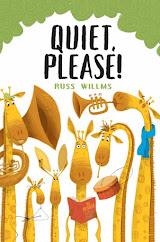Over 1.5 million tons of crabs are eaten all over the globe every year and I guess that is why there is a day to celebrate that fact. However there is no day set aside to just celebrate live crabs which I think is sad, given how many children's picture books feature crabs. So here, this day is about crabs, not the 'meat' they provide seafood connoisseurs with.
While there are some amazing factual books in the nonfiction section of the library (595.3) there are also so many crab stories. Probably the best known are Eric Carle's and Julia Donaldson's books about hermit crabs, but you will be surprised to see just how often a crab features as a main character.
See:
• A House for Hermit Crab by Eric Carle
• Sharing a Shell by Julia Donaldson
• Herman Crab by Peter Helliar
• Tiny Crab is a Tidy Crab by Paula Bowles
• Clem and Crab by Fiona Lumbers
• Tip Tap! Went the Crab by Tim Hopgood
• Don't Worry Little Crab by Chris Haughton
• I'm Fabulous Crab by Nicki Greenberg
• Koko and the Coconut by Turia Pitt
• The Crab Ballet by Renee La Tulippe
• Crab Moon by Ruth Horowitz
• One is a Snail Ten is a Crab by April Pulley Sayre
• Fish and Crab by Marianna Coppo
• The Selfish Crab by Anya Glazer
• Crab Cake by Andrea Tsurumi
• How the Crab Got His Claws by Rosie Dickins
• Mr Clownfish, Miss Anemone and the Hermit Crab by Sean E. Avery
• Hector the Hermit Crab by Katie Boyce
• This is Crab by Harriet Evans
• Clumsy Crab by Ruth Galloway
• Bad Crab by Amelia McInerney
• Looking for Crabs by Bruce Whatley
• Old Shell New Shell by Helen Ward
• Basghetti Spaghetti by Susanne Vettiger
and two fun graphic series
• A Crabby Book by Jonathan Fenske
• Crab and Snail by Beth Ferry
Once you associate crab with a favourite character you will care less about celebrating by eating crab.
I love this acronym. I'm going to make some badges to give children I see reading!

























































